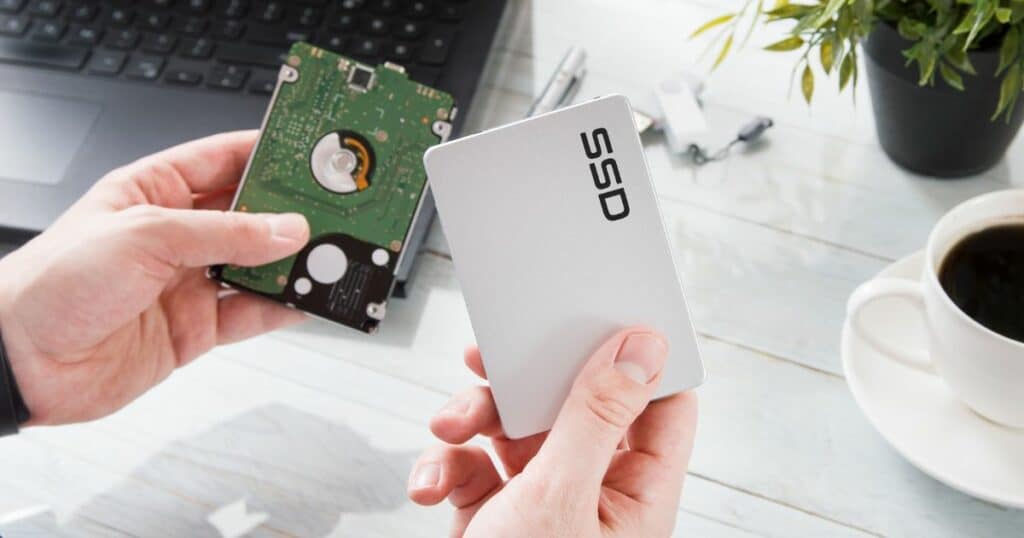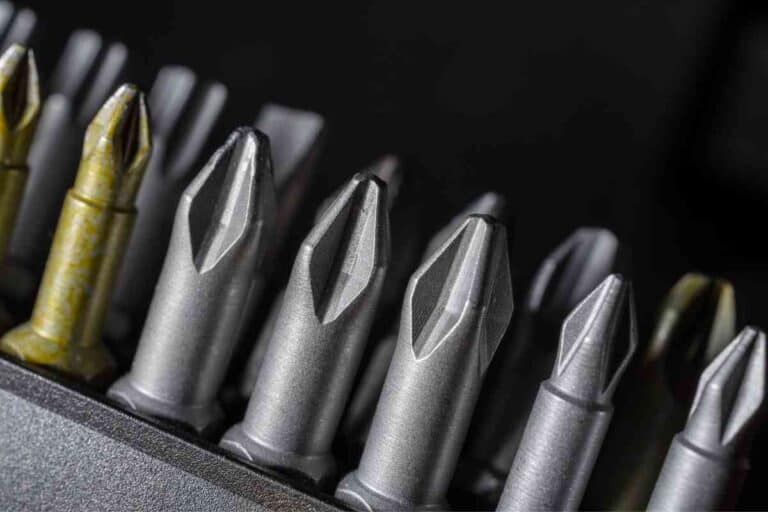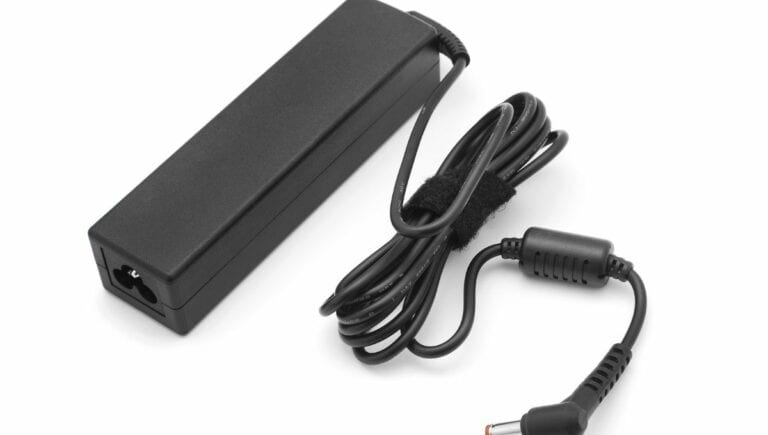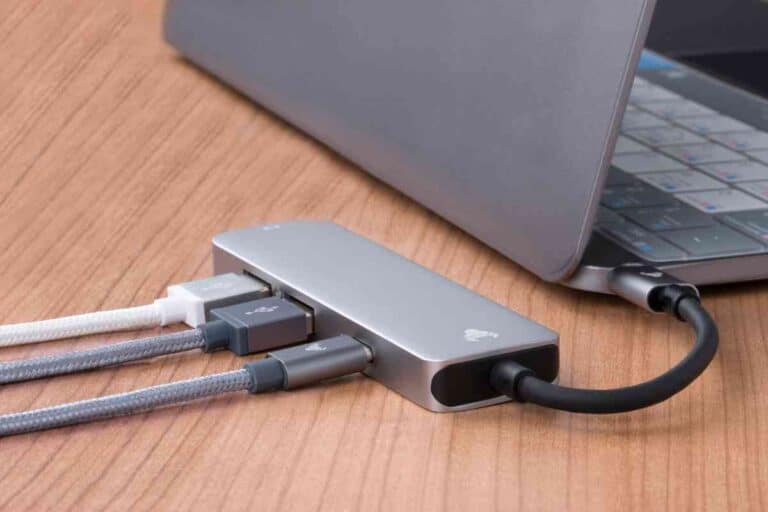Adding an SSD to Your MSI Laptop: Everything You Need to Know
For those looking to boost their MSI laptop’s performance and storage, adding an SSD to your MSI laptop is your launchpad into an upgraded computing experience. This hardware modification is becoming increasingly popular as users seek to maximize their device’s potential. In this article, we will guide you through the process, making it a straightforward task, even for the tech novices among us.

Understanding the MSI Laptop and Its Components
MSI laptops are known for their high performance and reliability, making them popular among gamers and professionals.
To understand how to add an SSD to your MSI laptop, it’s important to have a basic understanding of the laptop’s components.
Motherboard and Processor
The motherboard of an MSI laptop is the main circuit board that connects all the components together. It houses the processor, which is the brain of the laptop.
The processor determines how fast the laptop can perform tasks and how many tasks it can handle at once.
MSI laptops typically use Intel or AMD processors, with higher-end models using the latest generation processors for maximum performance.
RAM and Graphics Cards
RAM, or Random Access Memory, is the temporary storage space that the laptop uses to run programs and store data.
The more RAM a laptop has, the more programs it can run simultaneously without slowing down.
MSI laptops typically come with 8GB or 16GB of RAM, with some models supporting up to 32GB.
Graphics cards are responsible for rendering images and videos on the laptop’s screen. MSI laptops come with either integrated graphics or dedicated graphics cards from NVIDIA or AMD.
Higher-end models typically have dedicated graphics cards for better performance in gaming and other graphics-intensive applications.
Cooling System and Heat Pipes
The cooling system of an MSI laptop is designed to keep the laptop’s components cool during operation.
The cooling system typically consists of fans and heat pipes that draw heat away from the processor and graphics card. MSI laptops use advanced cooling technologies, such as Cooler Boost, to keep the laptop cool even under heavy load.
To add an SSD to your MSI laptop, you need to open the laptop’s case and locate the hard drive bay.
MSI laptops typically come with a standard 2.5-inch hard drive, which can be replaced with an SSD of the same size. Some higher-end models may also have an M.2 slot for adding an additional SSD.
| Component | Description |
|---|---|
| Motherboard | Main circuit board that connects all components |
| Processor | Brain of the laptop that determines performance |
| RAM | Temporary storage space for running programs |
| Graphics Card | Renders images and videos on the laptop’s screen |
| Cooling System | Keeps the laptop’s components cool during operation |
In summary, understanding the components of an MSI laptop is crucial to adding an SSD to your laptop.
The motherboard, processor, RAM, graphics card, and cooling system are all important components that contribute to the laptop’s performance and reliability.
Upgrading to an SSD can significantly improve the laptop’s speed and performance.
The Role and Types of Storage in Laptops
When it comes to laptops, storage is a critical component that determines the performance and functionality of the device.
Storage is responsible for storing all your laptop’s data, files, and programs. There are two primary types of storage devices in laptops: Hard Disk Drives (HDD) and Solid State Drives (SSD).
Hard Disk Drives (HDD)
HDDs are the traditional storage devices that have been used in laptops for decades. They consist of spinning disks that store data magnetically.
HDDs are available in different sizes, ranging from 2.5 inches to 3.5 inches. They are also available in different storage capacities, ranging from a few gigabytes to several terabytes.
| HDD Size | Storage Capacity |
|---|---|
| 2.5 inches | 500 GB to 2 TB |
| 3.5 inches | 2 TB to 16 TB |
HDDs are generally cheaper than SSDs, but they are slower and less reliable. They are also prone to failure due to the mechanical components involved in their operation.
Solid State Drives (SSD)
SSDs are the newer and faster storage devices that have gained popularity in recent years. They use flash memory to store data, which makes them faster, more reliable, and less prone to failure than HDDs.
SSDs are available in different sizes and storage capacities, ranging from 2.5 inches to M.2 NVMe SSDs.
| SSD Size | Storage Capacity |
|---|---|
| 2.5 inches | 120 GB to 4 TB |
| M.2 NVMe SSD | 128 GB to 4 TB |
SSDs are more expensive than HDDs, but they offer faster read and write speeds, translating to faster boot times, program load times, and file transfers.
They are also more durable and consume less power than HDDs.
Memory
Memory, also known as RAM, is another critical component that affects the performance of your laptop. Memory is responsible for storing data temporarily while the laptop is running.
The more memory your laptop has, the more programs it can run simultaneously without slowing down.
External Hard Drives
External hard drives are storage devices that connect to your laptop via USB or Thunderbolt ports. They are useful for storing large files and backups that you don’t need to access frequently.
External hard drives are available in different sizes and storage capacities, ranging from a few hundred gigabytes to several terabytes.
Storage is a critical component of laptops that affects their performance and functionality. HDDs and SSDs are the two primary types of storage devices in laptops, with SSDs being faster and more reliable than HDDs.
Memory is another critical component that affects the performance of your laptop. External hard drives are useful for storing large files and backups.
Understanding the Upgrade Process
Upgrading your MSI laptop with an SSD can significantly improve its performance and speed.
However, before you start the upgrade process, it’s essential to understand what you’re getting into and what you’ll need to do. Here’s a step-by-step guide to help you through the process.
- Check your laptop manual: Before you start the upgrade process, it’s essential to check your laptop’s manual for any specific instructions or warnings. You can usually find the manual on the manufacturer’s website or in the box that your laptop came in.
- Gather your tools: To upgrade your MSI laptop, you’ll need a few tools, including a screwdriver, screws, and a drive caddy. Ensure that you have the correct size screwdriver, usually a Phillips-head screwdriver, to avoid damaging the screws.
- Open the drive bay: Once you have the necessary tools, you’ll need to open the drive bay on your laptop. To do this, locate the screws that hold the drive bay in place and remove them using your screwdriver. Be sure to keep the screws in a safe place, so you don’t lose them.
- Insert the SSD: Once you’ve removed the drive bay, you’ll need to insert the SSD into the drive caddy. Some laptops may come with a metal bracket that you’ll need to attach to the SSD before inserting it into the drive caddy.
- Replace the drive bay: Once you’ve inserted the SSD into the drive caddy, you’ll need to reattach the drive bay. Use your screwdriver to secure the screws in place, ensuring that they’re tight enough to hold the drive bay securely.
- Check your BIOS settings: After you’ve replaced the drive bay, you’ll need to check your laptop’s BIOS settings to ensure that it recognizes the new SSD. To do this, restart your laptop and enter the BIOS settings by pressing the appropriate key, usually F2 or Delete. Once you’re in the BIOS settings, check the boot order to ensure that your SSD is listed as the primary boot device.
Overall, upgrading your MSI laptop with an SSD can be straightforward, provided you have the necessary tools and follow the instructions carefully.
You can significantly improve your laptop’s performance and speed by following the steps outlined above.
Choosing the Right SSD for Your MSI Laptop
When it comes to upgrading your MSI laptop with an SSD, choosing the right one can be a daunting task.
There are many factors to consider, including the type of SSD, the capacity, and the price.
Types of SSDs
Several types of SSDs are available, including SATA, PCIe, and M.2. SATA SSDs are the most common type and compatible with most laptops, including MSI laptops.
PCIe SSDs are faster than SATA SSDs but are more expensive. M.2 SSDs are the fastest type of SSD and are also more expensive than SATA SSDs.
However, not all MSI laptops support M.2 SSDs, so you’ll need to check your laptop’s specifications before buying one.
Capacity
The capacity of your SSD is another important factor to consider. SSDs are available in a range of capacities, from 128GB to 2TB or more.
The capacity you choose will depend on your needs and budget. A 128GB or 256GB SSD may be sufficient if you’re on a tight budget.
However, a 512GB or 1TB SSD may be a better choice if you need more storage space.
Price
SSD prices have come down in recent years but are still more expensive than traditional hard drives. The price of an SSD will depend on the type, capacity, and brand. SATA SSDs are the most affordable type, while M.2 SSDs are the most expensive.
However, SSDs have been steadily decreasing, so it’s now more affordable to upgrade your MSI laptop with an SSD.
Buying Guide
When buying an SSD for your MSI laptop, there are a few things to keep in mind. First, check your laptop’s specifications to ensure that it is compatible with the type of SSD you want to buy.
Second, consider the capacity you need and your budget. Finally, look for a reputable brand with good reviews to ensure that you get a reliable SSD.
Here’s a table summarizing the key differences between SATA, PCIe, and M.2 SSDs:
| Type of SSD | Speed | Price |
|---|---|---|
| SATA | Slower | Affordable |
| PCIe | Faster | Expensive |
| M.2 | Fastest | Most Expensive |
In conclusion, upgrading your MSI laptop with an SSD is a great way to improve its performance and speed.
When choosing an SSD, consider the type, capacity, and price to ensure that you get the best SSD for your needs and budget.
Installation and Setup of SSD
Adding an SSD to your MSI laptop can greatly improve its performance. Here’s how to install and set up your new SSD:
Step 1: Check Your Manual
Before installing your SSD, check your laptop’s manual to ensure compatibility. Make sure your laptop supports the type of SSD you plan to install.
Step 2: Gather Your Tools
You will need a screwdriver and screws to install your SSD. Check your manual to see what size screws you need.
Step 3: Install Your SSD Drive
- Turn off your laptop and unplug it from the power source.
- Remove the back cover of your laptop and locate the hard drive.
- Remove the screws holding the hard drive in place.
- Gently remove the hard drive from its slot.
- Insert the SSD drive into the slot.
- Secure the SSD drive with the screws you removed earlier.
Step 4: Clone Your Hard Drive
If you want to transfer your data from your old hard drive to your new SSD, you can use a cloning software. Clonezilla is a free and open-source software that can help you clone your hard drive.
Step 5: Backup Your Data
Before you start the cloning process, make sure to backup all your important data.
Step 6: Use Disk Management to Set Up Your SSD
- Press the Windows key + X and select Disk Management.
- Find your unallocated SSD and right-click on it.
- Select New Simple Volume.
- Follow the prompts to create a new partition on your SSD.
- Choose the file system you want to use. We recommend using NTFS.
- Choose a drive letter for your new partition.
Step 7: Convert Your SSD to GPT
If your SSD is larger than 2TB, you will need to convert it to GPT. Here’s how:
- Press the Windows key + X and select Disk Management.
- Find your SSD and right-click on it.
- Select Convert to GPT Disk.
Step 8: Reinstall Your Operating System
If you want to start fresh with your new SSD, you can reinstall your operating system. Make sure to backup all your important data before doing so.
Installing an SSD in your MSI laptop can greatly improve its performance. Follow these steps to install and set up your new SSD.
Performance and Speed After SSD Installation
Upgrading your MSI laptop’s storage from a traditional hard disk (HDD) to a solid-state (SSD) can significantly improve your laptop’s performance and speed.
Here are a few reasons why:
- Faster Boot Times: An SSD can boot up your operating system (OS) in seconds, while an HDD may take minutes. This means you can start working or gaming almost immediately after turning on your laptop.
- Improved Software Performance: An SSD can improve the performance of your software by reducing the time it takes to load and run. This is especially noticeable in resource-intensive applications like video editing software or games.
- Reduced Load Times: An SSD can significantly reduce load times in games. This means you can spend more time playing and less time waiting for your game to load.
- Overall System Responsiveness: An SSD can make your system feel more responsive and snappy. This is because an SSD can read and write data much faster than an HDD.
To illustrate the performance gains of an SSD, here is a table comparing the boot times and application load times of an MSI laptop with an HDD and an SSD:
| Task | HDD | SSD |
|---|---|---|
| Boot Time | 2 minutes | 15 seconds |
| Adobe Photoshop Load Time | 1 minute 30 seconds | 20 seconds |
| Grand Theft Auto V Load Time | 3 minutes 45 seconds | 1 minute |
As you can see, the SSD significantly outperforms the HDD in terms of boot times and application load times. This means you can save a lot of time and be more productive with an SSD.
Upgrading your MSI laptop’s storage to an SSD can improve performance and speed. It can reduce boot times, improve software performance, reduce load times in games, and make your system feel more responsive overall.
Troubleshooting Common SSD Installation Issues
Adding an SSD to your MSI laptop can significantly improve its performance. However, there are some common issues that you may encounter during the installation process.
In this section, we will discuss some of these issues and provide solutions to help you troubleshoot them.
Boot Failure
One of the most common issues that users encounter after installing an SSD is boot failure. If your laptop fails to boot after installing an SSD, there are a few things that you can do to troubleshoot the issue.
First, make sure that the SSD is properly installed. Check the manual that came with your laptop to ensure you followed the correct installation procedure.
If you are unsure, you can also check online resources for step-by-step guides on installing an SSD in your MSI laptop.
If the SSD is properly installed, the next step is to check your laptop’s BIOS settings. Ensure the boot order is set correctly and the SSD is set as the primary boot device.
If the boot order is incorrect, your laptop may be trying to boot from the wrong device, which can cause boot failure.
Disk Management
Another common issue that users may encounter when installing an SSD is disk management problems.
If your laptop fails to recognize the SSD or if the SSD is not showing up in Disk Management, there are a few things that you can do to troubleshoot the issue.
First, check the physical connections of the SSD. Make sure that the SATA cable is properly connected to both the SSD and the motherboard. If the connections are loose, your laptop may not be able to recognize the SSD.
If the physical connections are correct, the next step is to check the partition style of the SSD. Make sure that the SSD is formatted with the correct partition style.
If your laptop uses UEFI, the SSD should be formatted with GPT. If your laptop uses BIOS, the SSD should be formatted with MBR.
Manual
If you are still experiencing issues with your SSD installation, check the manual that came with your laptop for troubleshooting steps.
The manual may provide specific instructions on troubleshooting common issues that users encounter when installing an SSD.
Summary
Adding an SSD to your MSI laptop can significantly improve its performance. However, if you encounter issues during the installation process, there are several things that you can do to troubleshoot the issue.
Make sure that the SSD is properly installed, check your laptop’s BIOS settings, check the physical connections of the SSD, and make sure that the SSD is formatted with the correct partition style.
If you are still experiencing issues, check the manual that came with your laptop for specific troubleshooting steps.
Overview of Other MSI Laptop Upgrades
Upgrading your MSI laptop is a great way to get more out of your device. While adding an SSD to your MSI laptop is an excellent upgrade, there are other upgrades you can consider.
Here’s a brief overview of some of the other MSI laptop upgrades you can consider.
RAM Upgrade
Upgrading your MSI laptop’s RAM can significantly improve its performance. Upgrading your RAM can help your laptop run smoother if you’re running memory-intensive applications.
Here’s a table showing the maximum RAM capacity for some popular MSI laptop models:
| MSI Laptop Model | Maximum RAM Capacity |
|---|---|
| GE75 Raider | 64 GB |
| GS65 Stealth | 32 GB |
| GP65 Leopard | 64 GB |
Battery Upgrade
If you’re constantly on the go, upgrading your laptop’s battery can be a game-changer. A high-capacity battery can give you more hours of use, and it can also extend your laptop’s lifespan.
While MSI laptops are known for their long battery life, upgrading your battery can still be an excellent investment.
GPU Upgrade
If you’re a gamer or a graphic designer, upgrading your laptop’s GPU can significantly improve your device’s performance.
MSI laptops come with powerful graphics cards, but upgrading to a more powerful GPU can take your laptop to the next level. Here’s a table showing some popular MSI laptop models and their graphics card options:
| MSI Laptop Model | Graphics Card Options |
|---|---|
| GE75 Raider | NVIDIA RTX 2070/2080 |
| GS65 Stealth | NVIDIA GTX 1060/1070 |
| GP65 Leopard | NVIDIA GTX 1660 Ti |
CPU Upgrade
Upgrading your laptop’s CPU can be a bit more complicated than other upgrades, but it can significantly improve your device’s performance.
MSI laptops come with powerful Intel and AMD processors, but upgrading to a newer, more powerful CPU can make your laptop run smoother and faster.
Conclusion
While adding an SSD to your MSI laptop is an excellent upgrade, there are other upgrades you can consider.
Upgrading your laptop’s RAM, battery, GPU, or CPU can significantly improve your device’s performance and give you more hours of use. Consider your needs and budget when deciding which upgrades to make.
Frequently Asked Questions
Can I upgrade the storage on my MSI laptop?
Yes, you can upgrade the storage on your MSI laptop. Most MSI laptops come with an M.2 slot that can accommodate an SSD.
What is the process for adding an SSD to my MSI laptop?
Adding an SSD to your MSI laptop involves opening the back panel, locating the M.2 slot, and installing the SSD. The process may vary depending on the model of your MSI laptop.
It is recommended to consult the user manual or seek professional help if you are unsure.
What are the benefits of adding an SSD to an MSI laptop?
Adding an SSD to your MSI laptop can significantly improve its performance. SSDs are faster than traditional hard drives, resulting in faster boot times, faster application launch times, and improved overall system responsiveness.
Are there any compatibility issues when adding an SSD to an MSI laptop?
There should not be any compatibility issues when adding an SSD to an MSI laptop, as long as the SSD is compatible with the M.2 slot on your laptop.
It is recommended to check the specifications of your laptop and the SSD before making a purchase.
Will adding an SSD to my MSI laptop void the warranty?
Adding an SSD to your MSI laptop will not void the warranty, as long as the installation process does not damage any other components of the laptop.
However, it is recommended to check the warranty terms and conditions before making any modifications to your laptop.
How do I transfer my operating system to the new SSD on my MSI laptop?
Using cloning software, you can transfer your operating system to the new SSD on your MSI laptop.
Several cloning software options are available, such as Acronis True Image and Macrium Reflect. It is recommended to back up your data before cloning the operating system.
| Pros | Cons |
|---|---|
| Faster boot times | More expensive than traditional hard drives |
| Faster application launch times | Lower storage capacity |
| Improved overall system responsiveness | Limited write cycles |
| Quieter and more energy-efficient |





![can you use an apple monitor with a lenovo laptop [Answered]](https://borntechie.com/wp-content/uploads/2022/12/can-you-use-an-apple-monitor-with-a-lenovo-laptop-Answered-768x512.jpg)
